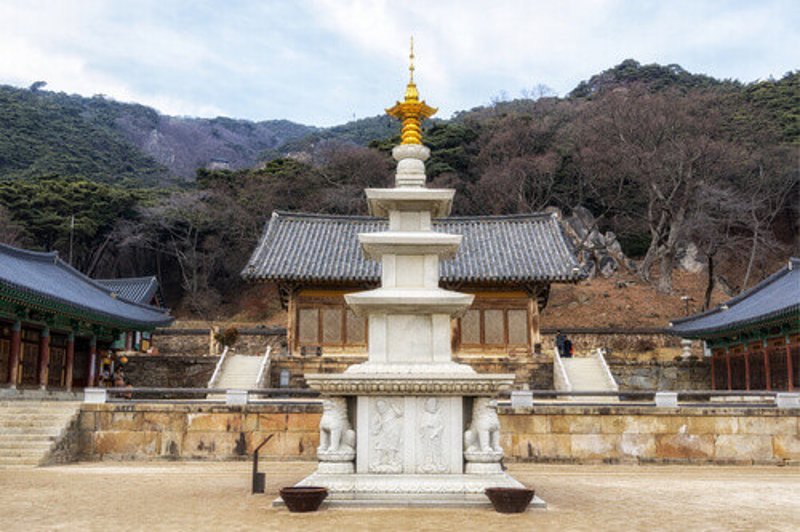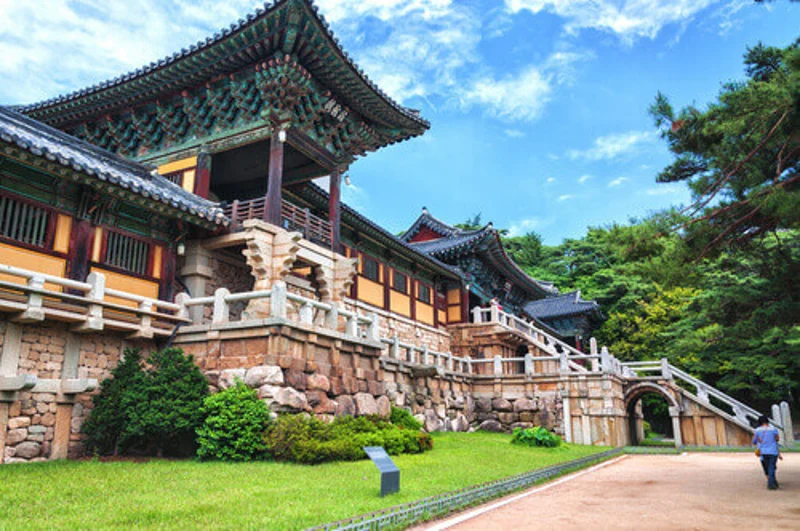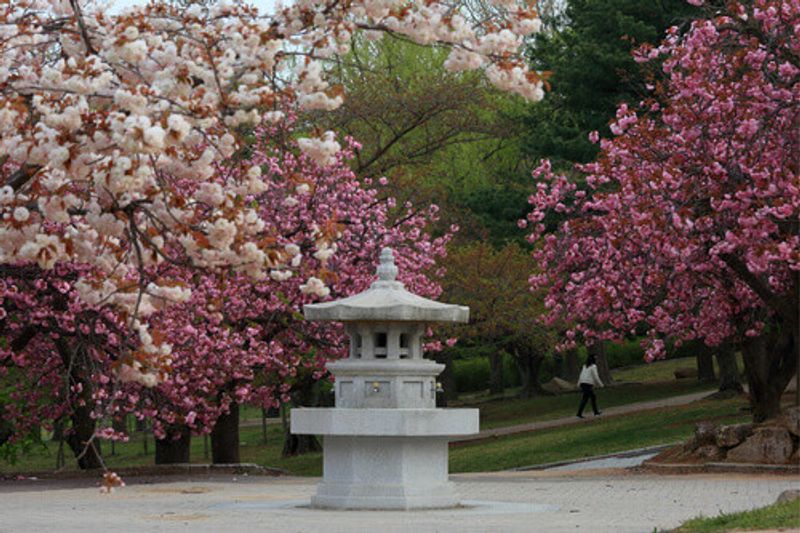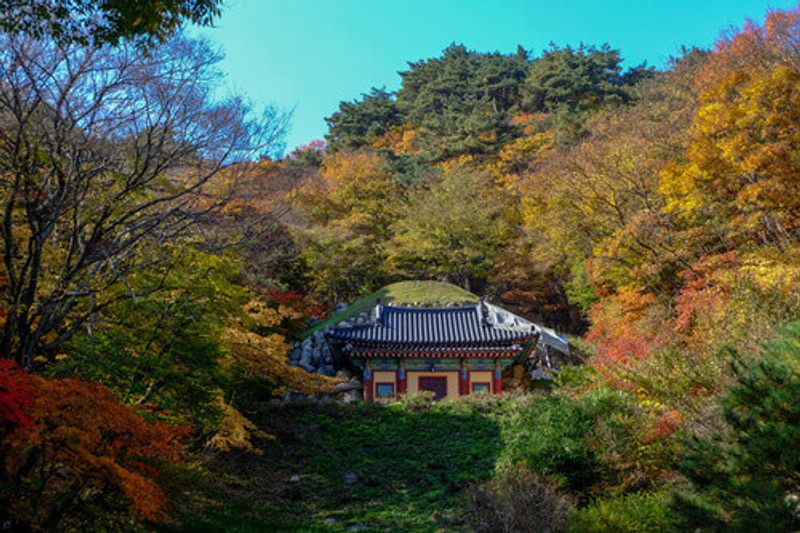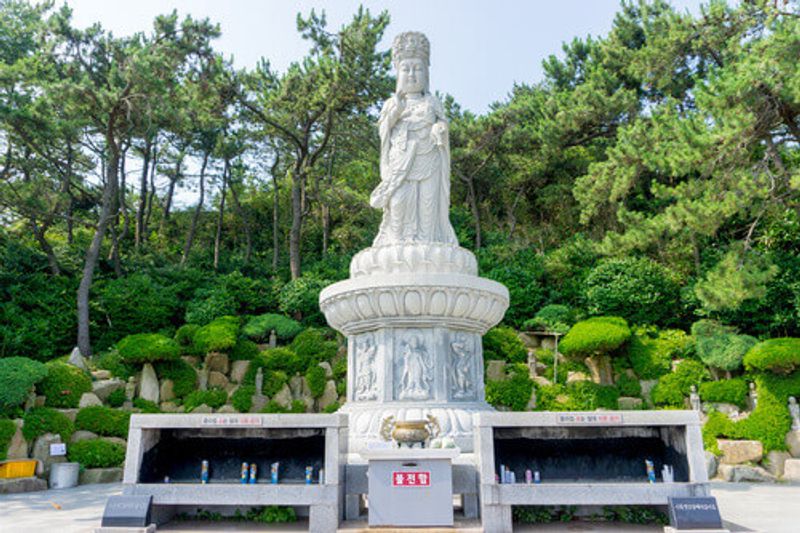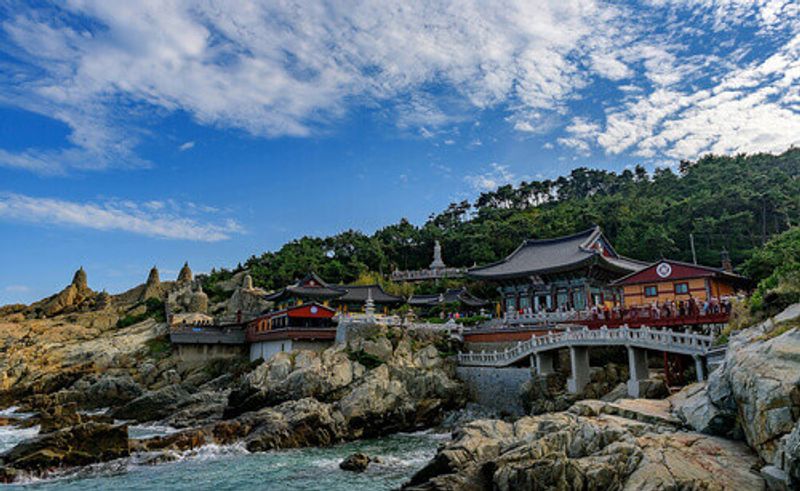Experience the serenity and history of South Korea’s painstakingly restored ancient temples
Korean Buddhism (or Seon) is a unique approach to Buddhism that developed over centuries, with ancient roots in South Korean culture and history. It has not always been smooth sailing for Buddhists in South Korea, but Buddhist temples are an integral part of the country’s landscape, each following distinct elements such as a Dharma hall (beopdang), a hermitage, a bell tower (jonggo), pagodas, and a traditional judgment hall (myeongbujeon). The most important building is often the main hall that houses Buddha’s statue, called the daeungjeon. Many of these structures are over a thousand years old, with the most significant being the Three Jewels Temples: Tongdosa, Haeinsa, and Songgwangsa, which represent Buddha, Buddhist teachings, and the Buddhist community respectively. Most of the Buddhist temples across the country have been reconstructed or restored, as many suffered damage or complete razing during the Japanese-led Imjin War in the 1500s.
Bulguksa Temple
This remarkable mountain temple complex dates back to the ancient Silla era, and bears the honourable government title of Historic and Scenic Site No. 1. The wood-and-stone complex is also classified as a UNESCO World Heritage Site, for its historical and cultural significance to Korean Buddhism in the Silla period. Bulguksa was established on Mount Tohamsan, and while it features all the main elements of a regular temple, its gardens truly stand apart – expect picture-perfect weeping willows, quaint stone bridges, lotus-filled ponds, and mountain views.
Built in 535, the temple was destroyed during a Japanese invasion in 1592, and subsequently rebuilt hundreds of years later. The complex underwent a full restoration beginning in the 1960s, but the stone foundations and temple pagodas are original.
Nearby is the Seokguram Grotto, or National Treasure 24 – a major part of the Bulguksa complex. A little farther up the mountain, this manmade grotto (a cave-like interior structure) was supposedly built in the 8th century and houses one of the finest Buddha sculptures in the world, surrounded by attendant Bodhisattvas and followers. As the story goes, the grotto was rediscovered after centuries by a traveling postman seeking shelter from a thunderstorm at the turn of the century, 1909. It suffered damage during the Japanese Occupation, and was finally restored in the 1960s, with the addition of climate control to help protect the stones.
Haedong Yonggungsa Temple
One of the only temples in South Korea built on the coast, Haedong Yonggungsa is full of peculiarities. Located in Busan, this Goryeo-era temple was originally named Bomun Temple in honour of the Goddess of Mercy, and eventually razed in the Japanese invasion during the 1500s. After an extensive reconstruction project in the 1930s, it was finally renamed Haedong Yonggung Temple in 1974.
While most Buddhist temples were built for seclusion and hermitage in the mountains, this temple hugs the rocky coastline overlooking the ocean, with quirky statuary and a bracing view of the water. Today, you can still see the statute of the Goddess of Mercy, which allegedly gathers little to no snow during the winter. During Buddha’s lunar birthday (May 12 in 2019), people celebrate with lit lanterns along the temple coastline, which makes for a spectacular night-time sight.
